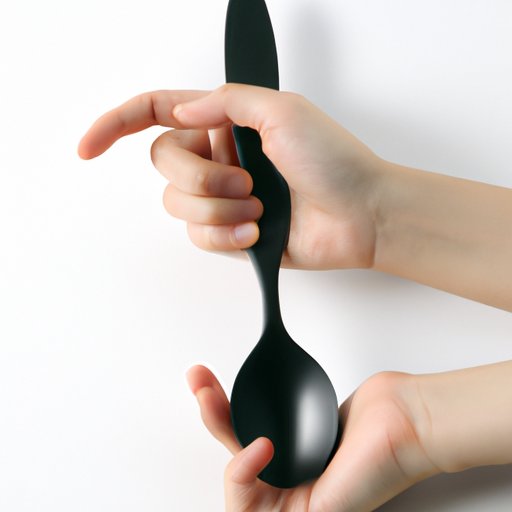
Introduction
Have you ever picked up a pair of spoons in your kitchen and wondered if you could make music with them? The answer is yes – playing the spoons is a fun and unique way to make music without breaking the bank on expensive instruments. This article is designed to give beginners a comprehensive guide on how to play the spoons. If you are curious about the art of spoon playing and want to learn how to create unique beats and rhythms, then this article is for you!
Beginner’s Guide: Learn How to Play the Spoons in 5 Simple Steps
The first step to playing the spoons is figuring out how to hold them. The spoons should be held concave side up, with the handle of one spoon facing towards you and the other spoon handle facing away from you. To start playing, simply hold the spoons between your thumb and fingers at the end near the handles.
There are five basic steps to spoon playing that beginners should know:
- Tap the spoons together. Start by tapping the spoons together, with the concave sides facing each other. Use a light touch and practice getting an even rhythm between the taps.
- Flip the spoons. Once you have the basic tapping technique down, flip the spoons over by rotating your wrists towards your body. The spoons should now be facing away from each other.
- Tap the spoons again. Practice tapping the spoons together again, this time with the spoons facing away from each other.
- Master the wrist flick. The wrist flick is what creates the unique sound of spoon playing. To flick your wrists, start with your wrists close to your body and then flick them outward quickly. Practice this motion until you can create a consistent sound each time.
- Put it all together. Finally, put all of your new skills together by tapping the spoons, flipping them, tapping them again, and then adding in the wrist flick. Practice until you feel comfortable enough to add in some music!
From Kitchen Utensils to Music Makers: Learning the Art of Spoon Playing
Spoon playing has been around for centuries, dating back to the early days of America when slaves would use spoons to make music during their free time. Today, spoon playing has become a fun and accessible way for people of all ages to make music. One of the reasons why the spoons are a good instrument for beginners is that you only need two utensils to get started. The basic sound created by spoon playing is a rhythmic clicking sound that can be used to create unique beats and rhythms. It’s a great way to get your creative juices flowing and add some flavor to music!
Strike a Beat: Exploring the Rhythmic World of Spoon Playing
Playing the spoons is a great way to add a unique flavor to any music genre. The clicking sound of the spoons can be used to create a variety of rhythms, from blues to rock to folk music. Here are a few examples of how spoons can be played in different rhythms:
- Blues: Play the spoons with a slow, steady beat, matching the drum beat of the music.
- Rock: Use a faster pace and add in some fills by tapping the spoons against your leg or using other objects to create different sounds.
- Folk: Use a more natural sound with the spoons and try to add some harmonies by tapping different parts of the spoon.
Adding variety to your playing is important to keep it interesting for the audience. Try switching up rhythms or adding in different sounds by using your hands or tapping the spoons against different surfaces. The key is to experiment and have fun!
Mastering the Spoons: Tips and Techniques for Advancing Your Playing Skills
Once you have mastered the basic technique of spoon playing, here are some tips to advance your skills:
- Try using different types of spoons, such as wooden or metal ones, to get different sounds.
- Use your hands or other objects to add different sounds to your basic spoon playing technique.
- Practice consistently to improve your timing and rhythm, and try playing along with different types of music.
The Spoon as an Instrument: A Fascinating History and How-to Guide for Playing
The tradition of playing the spoons is rich in history. In the United States, slaves would use spoons to create rhythms and beats during their leisure time, and this tradition has carried on through generations. Spoon playing is common in other parts of the world as well, such as Ireland, where it is known as “playing the bones.” Some notable spoon players include Buddy Holly, John Bonham, and Pete Seeger.
If you’re interested in learning more about the spoon’s history or want to dive deeper into its musical possibilities, there are many resources available online. Some helpful links include instructional videos, sheet music, and forums for spoon players to connect and share ideas.
Conclusion
Playing the spoons is a fun and unique way to make music that is accessible to everyone. With a little bit of practice, anyone can pick up the spoons and start creating beats and rhythms. Whether you’re a beginner or an experienced musician, there is always room to improve and learn.





